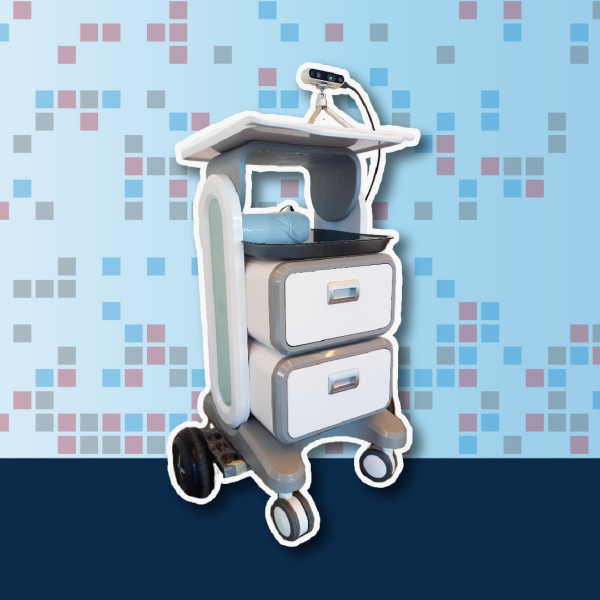June 24, 2024
By Louis DiPietro
Amid the unpredictability and occasional chaos of emergency rooms, a robot has the potential to assist health care workers and support clinical teamwork, Cornell and Michigan State University researchers found.
The research team’s robotic crash cart prototype highlights the potential for robots to assist health care workers in bedside patient care and offers designers a framework to develop and test robots in other unconventional areas.
“When you're trying to integrate a robot into a new environment, especially a high stakes, time-sensitive environment, you can't go straight to a fully autonomous system,” said Angelique Taylor, assistant professor in information science at Cornell Tech and the Cornell Ann S. Bowers College of Computing and Information Science. “We first need to understand how a robot can help. What are the mechanisms in which the robot embodiment can be useful?”
Taylor is the lead author of “Towards Collaborative Crash Cart Robots that Support Clinical Teamwork,” which received a best paper honorable mention in the design category at the Association of Computing Machinery (ACM)/Institute of Electrical and Electronics Engineers (IEEE) International Conference on Human-Robot Interaction in March.
The paper builds on Taylor’s ongoing research exploring robotics and team dynamics in unpredictable health care settings, like emergency and operating rooms.
Within the medical field, robotics are used in surgery and other health care operations with clear, standardized procedures. The Cornell-Michigan State team, however, set out to learn how a robot can support health care workers in fluid and sometimes chaotic bedside situations, like resuscitating a patient who has gone into cardiac arrest.
The challenges of deploying robots in such unpredictable environments are immense, said Taylor, who has been researching the use of robotics in bedside care since her days as a doctoral student. For starters, patient rooms are often too small to accommodate a stand-alone robot, and current robotics are not yet robust enough to perceive, let alone assist within, the flurry of activity amid emergency situations. Furthermore, beyond the robot’s technical abilities, there remain critical questions concerning its impact on team dynamics, Taylor said.
But the potential for robotics in medicine is huge, particularly in relieving workloads for health care workers, and the team’s research is a solid step in understanding how robotics can help, Taylor said.
The team developed a robotic version of a crash cart, which is a rolling storage cabinet stocked with medical supplies that health care workers use when making their rounds. The robot is equipped with a camera, automated drawers, and – continuing Cornell Bowers CIS researchers’ practice of “garbatrage” – a repurposed hoverboard for maneuvering around.
Through a collaborative design process, researchers worked with 10 health care workers and learned that a robot could benefit teams during bedside care by providing guidance on medical procedures, offering feedback, and tracking tasks, and by managing medications, equipment, and medical supplies. Participants favored a robot with “shared control,” wherein health care workers maintain their autonomy regarding decision-making, while the robot serves as a kind of safeguard and monitors for any possible mistakes in procedures, researchers found.
“Sometimes, fully autonomous robots aren’t necessary,” said Taylor, who directs the Artificial Intelligence and Robotics Lab (AIRLab) at Cornell Tech. “They can cause more harm than good.”
As with similar human-robot studies she has conducted, Taylor said participants expressed concern over job displacement. But she doesn’t foresee it happening.
“Health care workers are highly skilled,” she said. “These environments can be chaotic, and there are too many technical challenges to consider.”
Paper coauthors are Tauhid Tanjim, a doctoral student in the field of information science at Cornell, and Huajie Cao and Hee Rin Lee, both of Michigan State University.
Louis DiPietro is a writer for the Cornell Ann S. Bowers College of Computing and Information Science.



